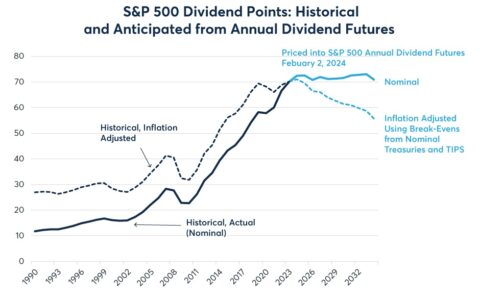
Are you tired of the traditional 9-to-5 workday and looking for a way to make some extra income on the side? Have you ever heard of day trading? Day trading is a popular method used by individuals to earn money through buying and selling stocks, currencies, or commodities within a single day. But before jumping into this fast-paced world of finance, there are certain things you need to know. In this article, we’ll cover everything from what day trading is and how it works to the basic strategies that can help you get started. So grab your coffee, sit back and let’s dive into Day Trading 101!
What is Day Trading?
Day trading is a trading strategy in which an investor buys and sells securities within the same trading day, with the aim of profiting from short-term market fluctuations. Day traders typically focus on stocks, but may also trade other securities such as options, futures, or currencies.
Day trading involves taking advantage of small price movements in the market, and requires close attention to market trends and news. Day traders use technical analysis tools and charting techniques to identify patterns and trends in the market, and often trade on leverage to maximize their potential returns.
While day trading can be highly lucrative, it also carries significant risks. The fast-paced nature of day trading can lead to emotional decision-making, which can result in losses. Additionally, day traders may be subject to higher trading fees and taxes.
Overall, day trading is a complex and high-risk trading strategy that requires careful consideration and a clear understanding of the associated risks before getting started.
Benefits of Day Trading
Day trading offers several potential benefits for investors who are willing to take on the associated risks. Here are some of the benefits of day trading:
- Potential for high returns: Day trading provides the opportunity to make significant profits in a short amount of time. By taking advantage of small price movements, day traders can generate substantial returns.
- Flexibility: Day trading allows investors to work from anywhere with an internet connection, providing flexibility and independence. Day traders can set their own schedules and work as much or as little as they want.
- Control: Day traders have control over their trades, and can quickly exit positions if they start to go against them. This allows day traders to limit their losses and manage risk more effectively.
- Education: Day trading requires a deep understanding of market trends and technical analysis, which can provide a valuable education for investors. By learning how to read charts and identify market patterns, day traders can become more informed and skilled investors.
- Challenge: Day trading can be mentally and emotionally challenging, which can be rewarding for some investors. The fast-paced nature of day trading requires quick thinking and decision-making, which can be exciting and engaging for those who enjoy a challenge.
Risks Involved in Day Trading
While day trading can offer the potential for high returns, it also carries significant risks. Here are some of the risks involved in day trading:
- High volatility: Day traders are exposed to high levels of market volatility, which can lead to significant losses. Small price movements can quickly result in large losses, and day traders must be prepared to manage risk effectively.
- Emotional decision-making: The fast-paced nature of day trading can lead to emotional decision-making, which can result in poor trading decisions and losses. Day traders must be disciplined and able to control their emotions in order to be successful.
- High trading costs: Day traders may be subject to higher trading fees, which can eat into potential profits. Additionally, frequent trading can result in higher taxes and other costs.
- Lack of diversification: Day traders typically focus on a few stocks or securities, which can lead to a lack of diversification in their portfolio. This can increase risk and make them more vulnerable to losses.
- Market risk: Day traders are exposed to market risk, which can be unpredictable and difficult to manage. Economic events, political developments, and other factors can all impact market trends and prices, making it challenging to predict short-term movements.
How to Get Started with Day Trading
If you’re interested in getting started with day trading, here are some steps you can take:
- Educate yourself: Before you start day trading, it’s important to educate yourself about the markets, trading strategies, and risk management techniques. There are many resources available, including books, online courses, and trading forums.
- Choose a broker: You’ll need to open an account with a brokerage firm that offers day trading services. Look for a broker with low commissions and fees, a user-friendly trading platform, and robust research and analysis tools.
- Develop a trading plan: A trading plan is essential for day traders. Your plan should include your goals, trading strategies, risk management techniques, and a schedule for when you’ll be trading.
- Practice with a demo account: Many brokers offer demo accounts that allow you to practice trading without risking real money. This can be a useful way to get comfortable with the trading platform and test out your trading strategies.
- Start small: It’s important to start with a small amount of capital and gradually build up as you gain experience and confidence. Avoid the temptation to take on too much risk too quickly.
- Monitor your performance: Keep track of your trades and analyze your performance regularly. This can help you identify areas for improvement and adjust your trading strategies accordingly.
Types of Strategies for Day Trading
There are a variety of strategies that day traders can use to try to profit from short-term market movements. Here are some common types of day trading strategies:
- Scalping: Scalping involves making multiple trades throughout the day to try to profit from small price movements. Scalpers typically hold positions for only a few seconds or minutes.
- Momentum trading: Momentum traders look for stocks or securities that are experiencing strong price movements and trade in the same direction. This strategy relies on the idea that prices will continue to move in the same direction for a period of time.
- Breakout trading: Breakout traders look for stocks or securities that have broken through a key support or resistance level. They then enter a trade in the direction of the breakout, with the hope that the price will continue to move in that direction.
- News-based trading: News-based traders focus on stocks or securities that are experiencing significant news events, such as earnings releases or regulatory announcements. They then trade in the direction of the news, with the hope that the price will move in their favor.
- Range trading: Range traders look for stocks or securities that are trading within a specific price range. They then buy when the price reaches the lower end of the range and sell when it reaches the upper end of the range.
- Trend following: Trend-following traders look for stocks or securities that are trending in a specific direction, either up or down. They then enter a trade in the direction of the trend, with the hope that the price will continue to move in that direction.
Technical Analysis for Day Trading
Technical analysis is a popular approach to day trading that involves analyzing charts and other market data to identify patterns and trends. Here are some common technical analysis tools and techniques used by day traders:
- Candlestick charts: Candlestick charts display price movements over a set period of time, and are commonly used by day traders to identify trends and price patterns.
- Moving averages: Moving averages are used to smooth out short-term fluctuations in price and identify longer-term trends. Day traders often use a combination of moving averages to identify buy and sell signals.
- Relative strength index (RSI): The RSI is a momentum indicator that measures the strength of a security’s price action. Day traders often use the RSI to identify overbought or oversold conditions and potential trend reversals.
- Bollinger Bands: Bollinger Bands are a volatility indicator that uses a moving average and standard deviation to create a band around the price. Day traders often use Bollinger Bands to identify potential breakouts or reversals.
- Fibonacci retracements: Fibonacci retracements are used to identify potential support and resistance levels based on the Fibonacci sequence. Day traders often use Fibonacci retracements to identify entry and exit points.
- Volume analysis: Volume analysis involves analyzing the volume of trades in a security to identify potential price movements. Day traders often use volume analysis to confirm trends and identify potential breakouts.
Tips for Developing a Successful Day Trading Strategy
Here are some tips for developing a successful day trading strategy:
- Define your goals: Before you start day trading, it’s important to define your goals and risk tolerance. Are you looking to make a full-time income from trading, or are you just looking to supplement your income? How much money are you willing to risk on each trade?
- Focus on a few securities: It’s difficult to keep up with multiple securities at once, so it’s better to focus on a few securities that you’re familiar with and that have high trading volumes.
- Use a combination of technical and fundamental analysis: While technical analysis is a popular approach to day trading, it’s important to also consider fundamental factors such as news events and market trends.
- Practice with a demo account: Many brokers offer demo accounts that allow you to practice trading without risking real money. This is a great way to test out different strategies and get comfortable with the trading platform.
- Have a trading plan: Before each trading session, create a trading plan that includes your entry and exit points, stop-loss levels, and profit targets. Stick to your plan and avoid making impulsive decisions.
- Manage your risk: Day trading involves a lot of risk, so it’s important to manage your risk by setting stop-loss orders and limiting your position size.
- Keep a trading journal: Keeping a trading journal can help you track your progress, identify what’s working and what’s not, and improve your overall trading strategy.
Conclusion
Day trading can be an exciting and potentially profitable way to trade the financial markets, but it also comes with risks. It’s important to understand the risks and benefits of day trading, and to develop a solid trading strategy that fits your goals and risk tolerance. By focusing on a few securities, using a combination of technical and fundamental analysis, and managing your risk, you can increase your chances of success in day trading. Remember to always stay disciplined and avoid making impulsive decisions, and to continue educating yourself on the markets and trading strategies.
Author:Com21.com,This article is an original creation by Com21.com. If you wish to repost or share, please include an attribution to the source and provide a link to the original article.Post Link:https://www.com21.com/day-trading-101.html










